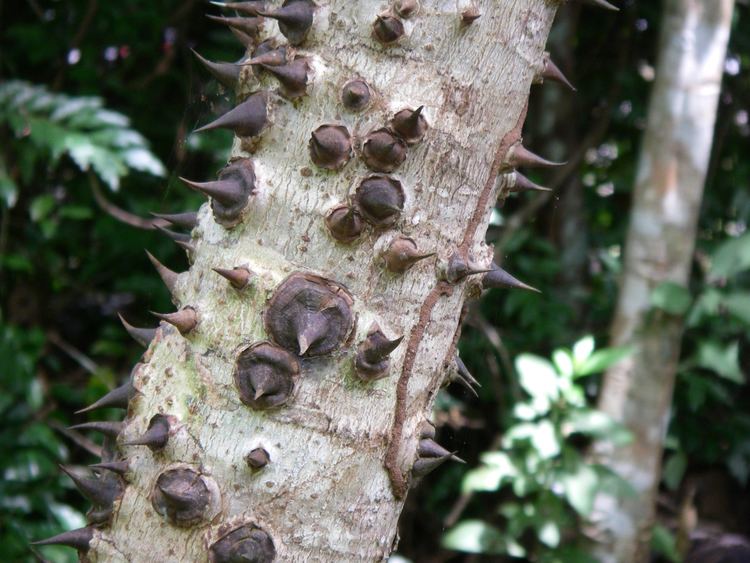Rank Species | Genus Hura Higher classification Hura | |
 | ||
Similar Hura, Euphorbiaceae, Codariocalyx motorius, Bursera simaruba, Jatropha gossypiifolia | ||
Hura crepitans, the sandbox tree, also known as possumwood and jabillo, is an evergreen tree of the spurge family (Euphorbiaceae), native to tropical regions of North and South America, including the Amazon Rainforest. It is recognized by the many dark, pointed spines and smooth brown bark. These spines have caused it to be called Monkey no-climb.

Sandbox trees can grow to 60 metres (200 ft), and the large ovate leaves grow to two feet wide. They are monoecious. The red flowers have no petals. Male flowers grow on long spikes; female flowers are solitary in axils. The fruit is a large capsule with explosive dehiscence; seeds can be launched at 70 metres per second (160 mph). One source states that ripe capsules catapult their seeds as far as 100 metres (330 ft). Another source states that seeds are thrown as far as 45 metres (148 ft) from a tree, with a mode of about 30 metres (98 ft). It has also been known as the Dynamite tree, so named for the explosive sound of the ripe fruit as it splits into segments.

Its fruits are pumpkin-shaped capsules, 1.4–2 inches (3–5 cm) long, 2–3.2 inches (5–8 cm) diameter, with 16 carpels arranged radially. Its seeds are flattened and about 0.8 inches (2 cm) diameter. In parts of Tanzania in Africa it has become invasive.

This tree prefers wet soil, and partial shade or partial sun to full sun. It is often cultivated for shade.

Fishermen have been said to use the milky, caustic sap from this tree to poison fish. The Caribs made arrow poison from its sap. The wood is used for furniture under the name "hura". Before more modern forms of pens were invented, the trees' unripe seed capsules were sawed in half to make decorative pen sandboxes (also called pounce pots), hence the name 'sandbox tree'.

